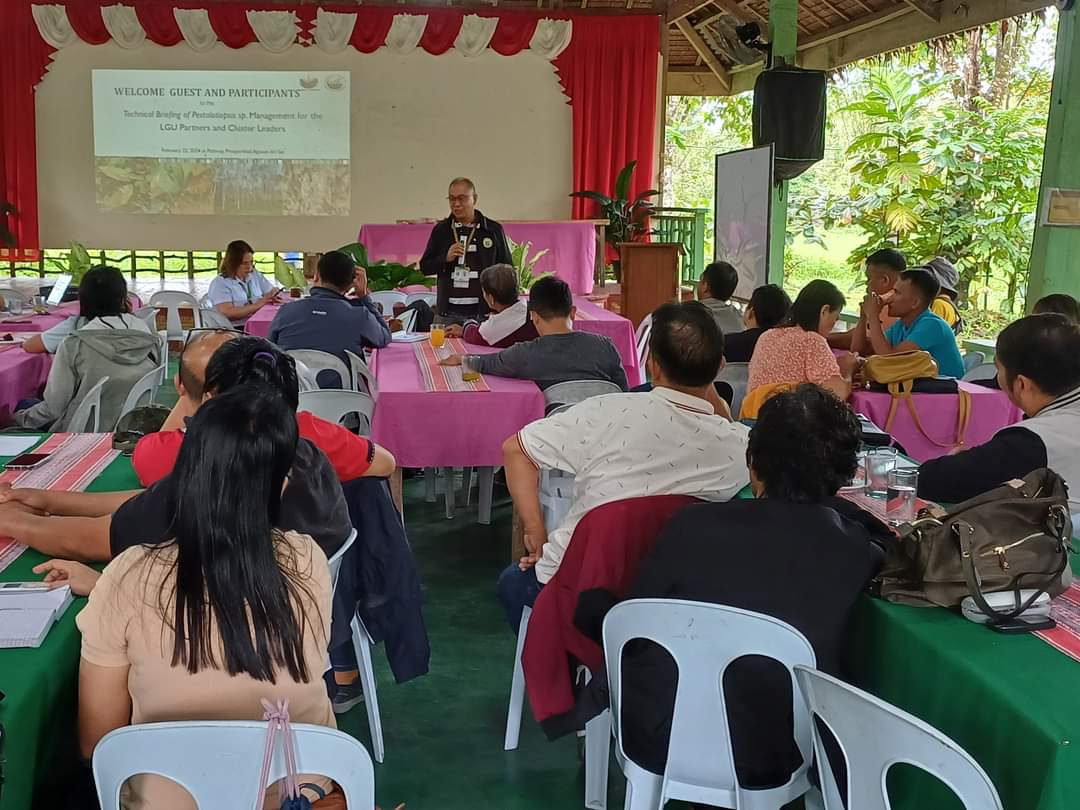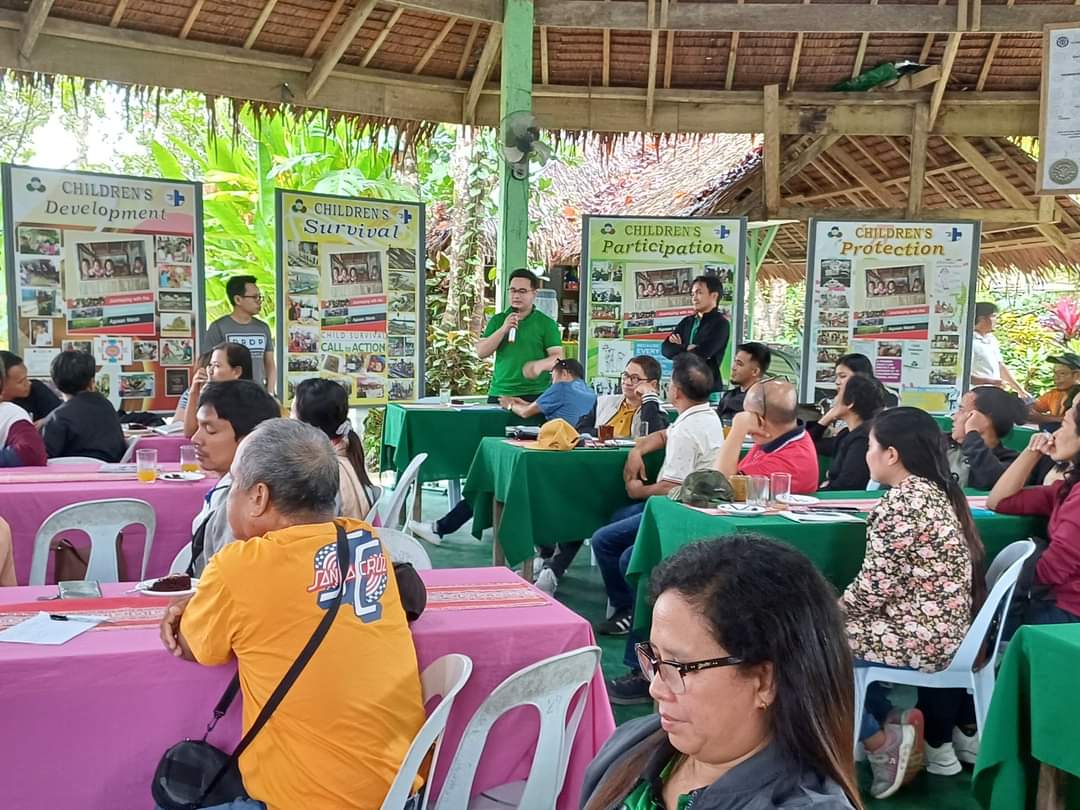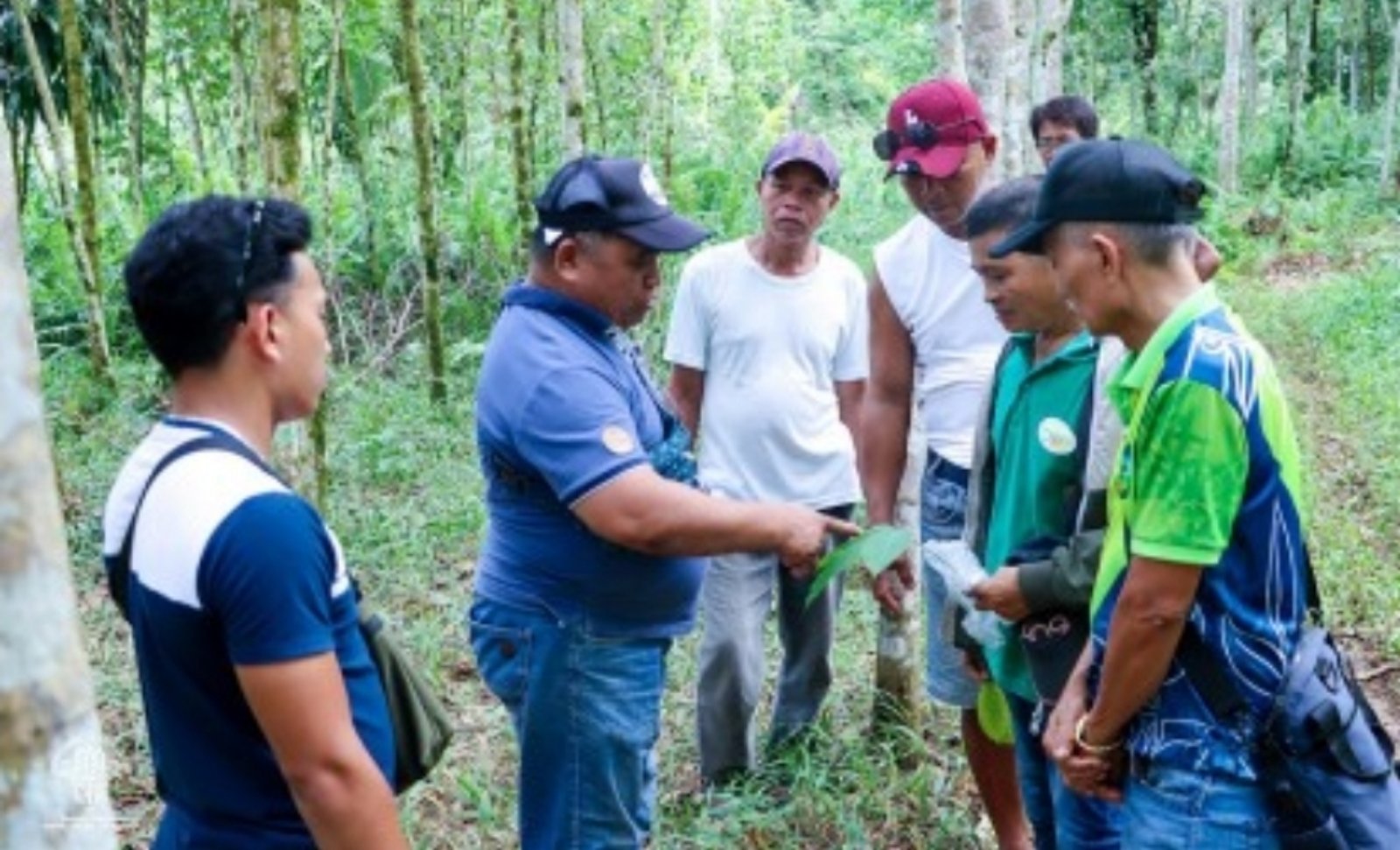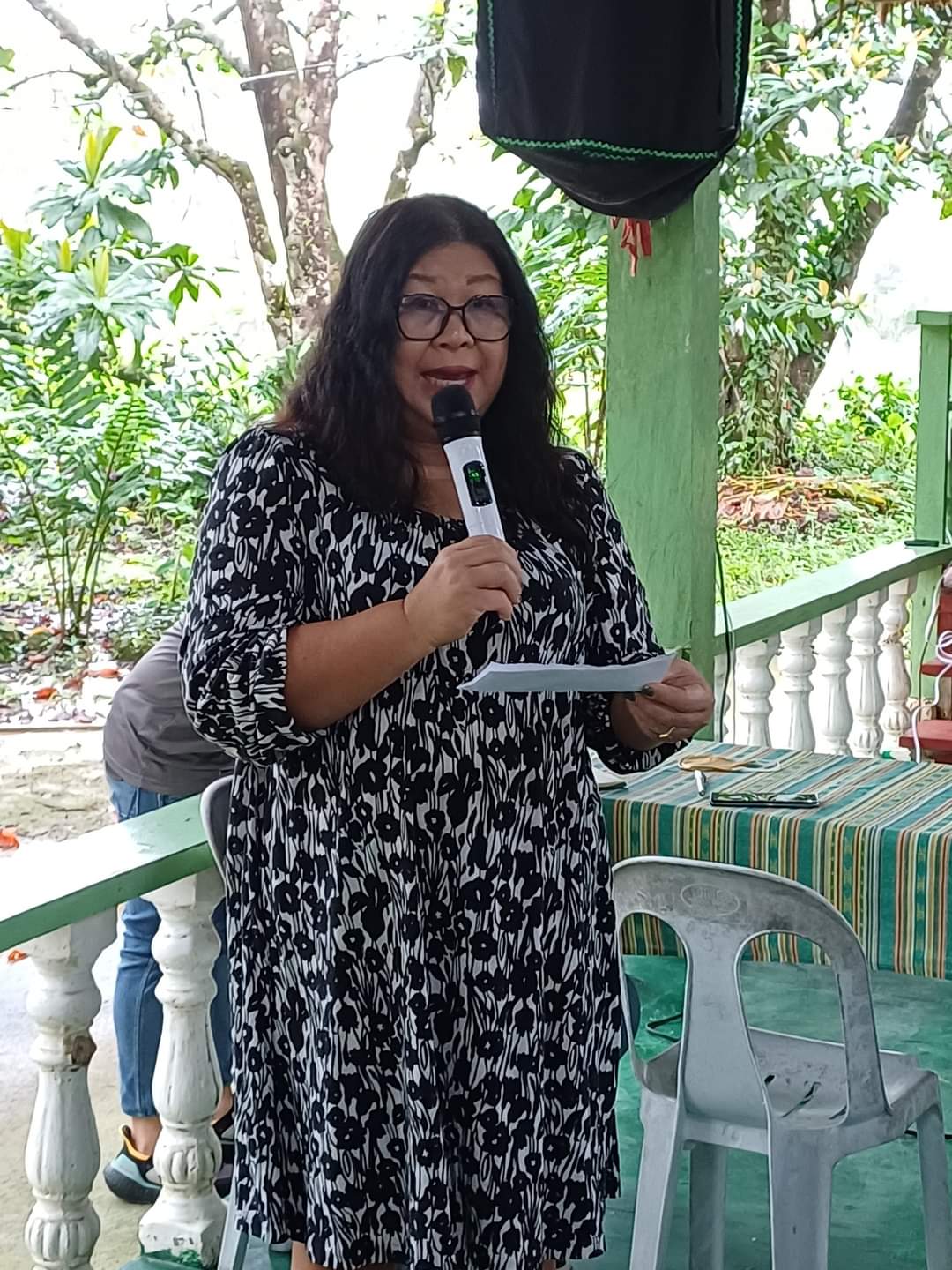BUTUAN CITY (PIA) – To address the emerging leaf fall disease on rubber trees, also known as Pestalotiopsis, the Department of Agriculture (DA) Caraga, together with the Philippine Rubber Research Institute (PRRI), recently conducted a technical briefing for local government units (LGUs) and farm cluster leaders in Patin-ay, Prosperidad, Agusan del Sur.

The Department of Agriculture (DA) Caraga, together with the Philippine Rubber Research Institute (PRRI), convened the rubber-producing farmers from the different provinces of the region for an orientation on the pressing concern ofPestalotiopsis and provided ways to further prevent the damages it will cause to their livelihood. Photo courtesy of DA-Caraga.
DA Regional Executive Director Ricardo Oñate, Jr., revealed that Pestalotiopsis occurs during prolonged wet weather and high humidity conditions.
“The disease can infect leaves, shoots, twigs, fruits, and seeds of a rubber tree. It causes leaf defoliation up to 80-100 percent, which will affect latex production,” he said.
“Spraying fungicides can be taken as preventive measures to control the spread of this disease. Planters are advised to be vigilant and take precautionary measures to protect our rubber plantations,” cited Oñate.
Prior to the briefing, the DA, through the Technical Working Group on Pestalotiopsis, conducted field monitoring and validation of rubber farms and the extent of infection with the disease in rubber areas in the region. The results of the said validation served as the basis for proposals or measures to help farmers recover from this situation.
The DA also strengthened its promotion of the use of the biocontroagent Trichoderma harzianum to control the disease. In addition, the agency has also distributed fungicides to pestalotiopsis-infected areas.

Participating rubber-producing farmers in Caraga region raised their queries to the personnel from the Department of Agriculture (DA) and Philippine Rubber Research Institute (PRRI), during an orientation on Pestalotiopsis, held in Patin-ay, Prosperidad, Agusan del Sur. Photo courtesy of DA-Caraga.
The disease was first observed in April last year on two rubber tree farms in Agusan del Sur.
The airborne disease has since spread to other rubber farms in Caraga.
Based on the Damage Assessment Reports submitted by the LGUs to the DA, as of February 7, 2024, there are 1,765 hectares that have already been infected with Pestalotiopsis, and 1,120 farmers have been affected.
With this, the DA deemed it necessary to brief the LGUs about Pestalotiopsis and the grave threat it poses tothe rubber industry of the region if left unattended.
Technical personnel from the DA, PRRI, and the Bureau of Plant Industry also discussed the various prevention and management methods for the disease.
Moreover, other steps that can be taken to help contain the spread of the disease, such as the crafting of local policies and ordinances, were also discussed.
According to Engr. Evangeline P. Garcia, training specialist II of the PRRI, most rubber farms infected with Pestalotiopsis were forest-like, had no fertilization, did not observe proper planting distance, and had high-density planting. Hence, she emphasized the importance of sanitation and following good agricultural management practices to keep crops from getting infected with diseases.
On the other hand, DA-Caraga Regional Technical Director for Operations Rebecca R. Atega stressed the importance of the LGUs’ cooperation with the DA and the PRRI in addressing the rubber leaf fall disease.

As Pestalotiopsis, or the rubber leaf fall disease, threatens rubber farms in the Caraga region, the Department of Agriculture (DA) has intensified its information campaign forrubber growers. The campaign aims to equip rubber growers with knowledge of the disease and help them protect their rubber farms through various scientific methods and approaches. Photo courtesy of DA-Caraga

Regional Technical Director for Operations Rebecca R. Atega of the Department of Agriculture (DA) Caraga highlighted the need for constant collaboration between the rubber-producing farmers and the DA, along with the Philippine Rubber Research Institute (PRRI) and local government units, in the realization of the programs and policies that are geared towards the development of the farmers and rubber industry in the region. Photo courtesy of DA-Caraga.
She added that the LGUs play a very important role in containing the disease, especially in terms of coming up with policies or ordinances to help contain the disease.
“We encouraged our counterparts from the LGUs to help our farmers by coming up with concrete ways to preventfurther damage caused by Pestalotiopsis. As we aid them with the right machinery, we will also guide them on how to sustain their produce,” said Atega.
The participating LGus and the rubber farmers, on the other hand, took an active part inthe briefing and contributed their insights on how to prevent further impacts of the Pestalotiopsis, as they fear that this will greatly affect their livelihood.
Data from the Australian Centre for International Agricultural Research (CIAR) showed that rubber is Agusan del Sur’s fourth largest crop, but only 50 percent of the total planted area is productive or tappable, and the average cuplump yield of 0.9 tonnes per hectare per year is much lower than the national average of 1.28 thousand hectares per year.
Hence, the agriculture department in the region is gearing up its effort to improve the rubber industry in partnership with potential stakeholders. (JPG, PIA-Caraga with a report from DA-Caraga)
